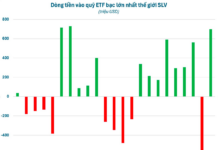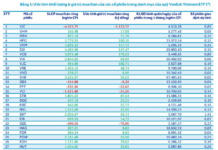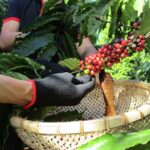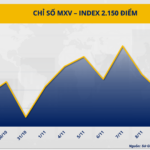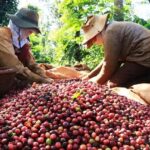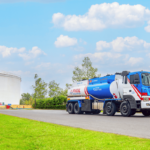Vietnam’s Coffee Prices are the Highest in the World
In the international market, coffee prices on the two exchanges reversed course in the last session. The strong US dollar curbed robusta’s gains, but arabica prices continued to rise.
On the London exchange, robusta coffee for January 2025 delivery fell slightly by 0.23% (11 USD/ton) from the previous session to 4,787 USD/ton. Similarly, the March 2025 contract also fell by 0.21% (10 USD/ton) to 4,732 USD/ton.
In contrast, on the New York exchange, arabica coffee for March 2025 delivery rose by 0.77% (2.25 US cents/pound) to 294.75 US cents/pound. The May 2025 contract increased by 0.74% (2.15 US cents/pound) to 292.40 US cents/pound.
Recently, global coffee prices have been on the rise due to various factors, including the impact of climate change and the El Niño phenomenon, which has caused drought in coffee-growing regions worldwide, leading to reduced supply. Additionally, military conflicts have also contributed to higher export costs.
In this crop year, concerns about reduced exports from Vietnam and Brazil, the two largest coffee exporters, have kept international coffee prices high.
StoneX, a consulting firm, forecasts a 0.4% decrease in Brazil’s coffee production for the 2025-2026 crop year due to prolonged drought during the flowering stage. EU regulations against deforestation may also limit coffee supply from Brazil, a country facing deforestation issues.

High coffee prices make international buyers hesitant to commit. Illustration: Internet. |
In the domestic market, after a price drop, local coffee prices rebounded strongly on November 22, increasing by 1,700 – 1,800 VND/kg.
Currently, the average coffee purchasing price in the Tay Nguyen region is 115,300 VND/kg. In Gia Lai province, coffee is bought at 115,200 VND/kg, while in Dak Nong and Dak Lak provinces, the purchasing price is as high as 115,300 VND/kg. In Lam Dong province, coffee is purchased at 114,800 VND/kg.
According to experts, Vietnam’s coffee prices are the highest in the world. With concerns about supply shortages and Vietnam being the largest producer and exporter of robusta, robusta prices have continuously surged to new highs. Arabica prices have also fluctuated around a 13-year peak.
However, the coffee output for the 2024 – 2025 crop year is expected to decrease by 10-15% compared to the previous year.
Mr. Nguyen Nam Hai, Chairman of the Vietnam Coffee-Cocoa Association (VICOFA), shared that Vietnam has entered a new coffee crop year. The predicted decrease in output is due to low coffee prices in previous years (around 40,000 VND/kg), which led farmers to switch to more profitable fruit trees. In areas of intercropping, farmers prioritized fruit trees over coffee. Additionally, climate change has caused drought in some coffee-growing regions, affecting the trees’ growth and resulting in lower yields than the previous year.
“The reduction in coffee output will not have a significant impact. Vietnam will still ensure export volume, avoiding shortages as predicted by many. The supply chain will not face issues or disruptions. Despite the decrease in output, Vietnam’s coffee prices in the 2024-2025 crop year will remain high, leading to an increase in export turnover,” Mr. Hai stated.
Struggling to Find a Balance in Pricing
According to VICOFA, in the first 15 days of November, Vietnam exported only 20,933 tons of coffee, with an export turnover of over 121.79 million USD, a decrease of 44.8% in volume but an increase of 1.8% in value compared to the same period last year. Robusta remained the main export product, with 16,293 tons exported and a turnover of over 80.67 million USD.
Cumulative statistics from the beginning of the year to November 15 show that Vietnam exported over 1.17 million tons of coffee, with an export turnover of 4.7 billion USD, a decrease of 13.5% in volume but an increase of 38.1% in value compared to the same period last year. Robusta exports remained the mainstay, with 964,610 tons exported and a turnover of 3.48 billion USD.
Usually, in previous years, the export volume in November gradually increased as farmers entered the main harvest season. However, this year’s data reflects an unusual situation: high coffee prices but a significant drop in export volume.
Explaining this phenomenon, Mr. Hai said, “The sharp drop in coffee export volume in the first half of November is not a significant issue. In my opinion, the main reason is the high coffee prices, which have made it challenging to find a price balance between supply and demand. Buyers are waiting for prices to drop, while sellers are hoping for higher prices. The two parties have not been able to agree on a common price, leading to stalled transactions. Many traders are even hoarding their goods, waiting for prices to rise further before selling. International buyers, on the other hand, still have reserves and are not in a rush to commit.”
According to Mr. Hai, as we are still in the early stages of the crop year, he predicts that in the latter half of November and December, when the harvest volume increases and prices stabilize, the export volume will also rise.
Thanh Huyen
“Dollar Soars to a One-Year High as Markets Anticipate Trump’s Policies”
The metals market remains under selling pressure as platinum prices fell for the fourth straight session; COMEX copper prices weakened to a two-month low.
“A Brewing Headache: The Conundrum of the Latest Coffee Craze”
“As coffee prices surge, farmers rejoice while businesses brace for a challenging season ahead. The upcoming harvest looms large, with rising costs putting pressure on an industry already facing a slew of economic hurdles. With input expenses climbing, the future looks uncertain for those tasked with bringing our favorite brew to the masses.”
















